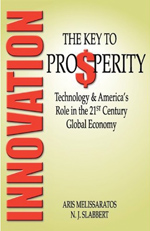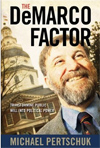It’s no surprise to learn that a Johns Hopkins physician developed the very concept of safe and modern surgery—and, on top of that, implemented revolutionary sterilization techniques and created the residency training concept for medical school. Yet somehow, despite these and other advances that have saved hundreds of thousands of lives, William Stewart Halsted remains a virtual unknown outside the medical community.
That may have been how Halsted (born in 1852 in New York City) wanted it—though not for the best of reasons. A new book by Manhattan plastic surgeon Gerald Imber, Genius on the Edge (Kaplan, 2010), examines both the panoply of medical improvements Halsted made throughout his career, and a side of Halsted’s life he kept far from the public eye: a 35-year-long addiction to cocaine and then morphine, the latter prescribed to help cure his dependence on the former.
Imber first learned about Halsted during his residency in California, where he studied under Roscoe Wilcox, who had learned from George Heuer, a protégé of Halsted’s. Much like classical musicians trace their instructors’ lineage back to the great conductors and artists, so do physicians—particularly surgeons. And Halsted was a fearless surgeon, made bold by his innate understanding of physiology and his rigorous studies of the human body. That strength allowed him, in 1882, to diagnose and perform the first successful gallstone removal surgery on his own dying mother, on a kitchen table, according to Imber’s book.
What made Halsted such a special physician? “He was exposed to essentially the same elements as all the other physicians of the time,” says Imber, referring to the great strides being made by German and British medical researchers. “But Halsted seemed able to synthesize a whole out of each of these little things in a way no one else could. He saw a step beyond everyone else. He saw the big picture.”
Halsted arrived in Baltimore in 1886, three years before the official opening of the Johns Hopkins Hospital. He served as the first chief of surgery at a time when that field was about to evolve—thanks, in large part, to Halsted—from a nearly guaranteed death sentence into a legitimate and beneficial medical course of action. While at Hopkins, he pioneered countless improvements to surgical procedure (like wearing rubber gloves and using antiseptics) and theory—including the development of a successful radical mastectomy, a hernia repair, and thyroid and digestive surgery advances. Still, “he’s known for the residency training system or the Halsted method of safe surgery,” Imber says. “The things he did changed the environment in the way we do medicine.”
Halsted’s success can be attributed to fortuitous circumstances. A brilliant, revolutionary research physician (Halsted) was able to start from a clean research slate at a brand new, forward-thinking institution (Johns Hopkins Hospital), with the support of a leader who believed in him and helped him work through his substance abuse issues (the first dean of the School of Medicine, William Welch). It was Welch whom Halsted entrusted with his secrets, and it was Welch who first helped Halsted seek treatment—and then tacitly aided Halsted as he covered for the surgeon’s months-long sabbaticals away from Baltimore, which almost always included indulgence in his chemicals.
The number of aggregate years of research and work he lost to his addictions is an unfortunately large number, and his debilitating condition makes Halsted’s achievements even more impressive. Some of his Hopkins students who went on to greatness of their own argued that his addictions somehow assisted his discovery process; legendary surgeon Alfred Blalock said, “I think it is probably very fortunate for American surgery that he acquired [his addiction].” But Imber strongly disagrees with that contention. “He did this in spite of his drug addiction,” says Imber. “Can you imagine if he wasn’t encumbered?” two other recent books by Johns Hopkins leadership and faculty deal with economics and politics, and the intersection between the two disciplines.
First is Innovation: The Key to Prosperity (Montagu House, 2009), penned by Aris Melissaratos, A&S ’66, special adviser for technology enterprise development to Johns Hopkins President Ron Daniels, and co-author N.J. Slabbert. Melissaratos—a longtime technology entrepreneur and former chief technology officer for Westinghouse Electric Corporation—and Slabbert put forth the case that without massive and immediate U.S. government investment in technology, global prosperity is at serious risk. To make their case, they offer a sweeping variety of science and history lessons in innovation and boldness (the earliest Greek philosopher-scientists, Aaron Burr, modern physics, the Chicago World’s Fair, DNA’s discovery, Cecil Rhodes, etc.). These pivotal moments and people are cast alongside a scathing analysis of what the authors identify as anti-technology sentiment, policy, and beliefs in the United States that are jeopardizing the nation’s role as the world’s leader not just in technology but in hope, creativity, and aspiration.
The DeMarco Factor is a book about a lobbyist, but not of the “Washington, D.C., fat cat expense account, K Street” sort. The book—written by Michael Pertschuk, a longtime health care advocate, former chairman of the Federal Trade Commission, and an associate in the Bloomberg School of Public Health’s Department of Health, Behavior, and Society—is about that rarity known as the public advocacy lobbyist. The titular DeMarco is Bloomberg School assistant professor Vinny DeMarco, A&S ’79, ’81 (MA). DeMarco, president of the nonprofit Maryland Citizens’ Health Initiative, lobbies for causes such as increased tobacco taxes, health care reform, and gun control. The book chronicles DeMarco’s philosophies, strategies, tactics, and teachings as he’s challenged some of the nation’s most powerful special interest groups in the Maryland Legislature. It’s a great read for hardcore political junkies who want an insider’s look at how legislation is created, tweaked, and ultimately (or not) passed. And it reveals how the legislative sausage is made, a process that isn’t always encouraging to believers in democracy. But as the book tracks DeMarco’s planning and brainstorming (and his use of his mother’s marinara sauce as a political tool), it’s an intriguing look at Maryland’s legislative process.



